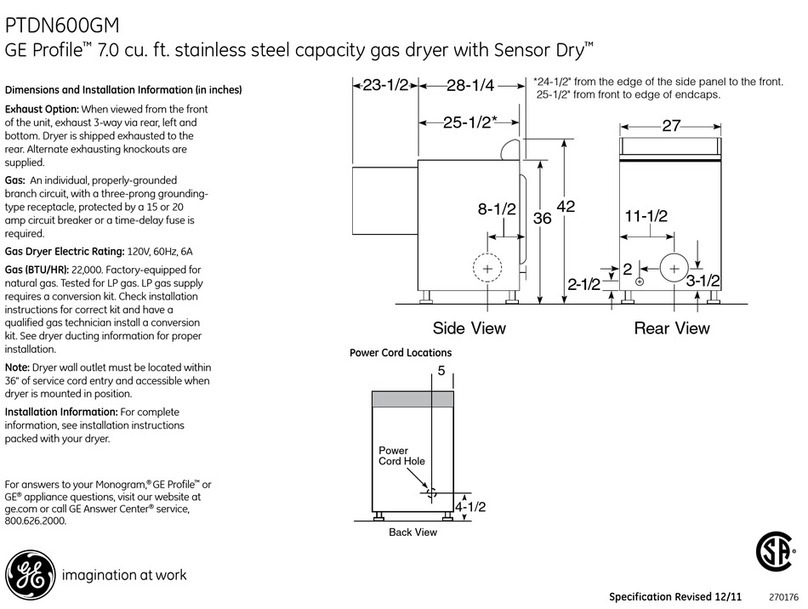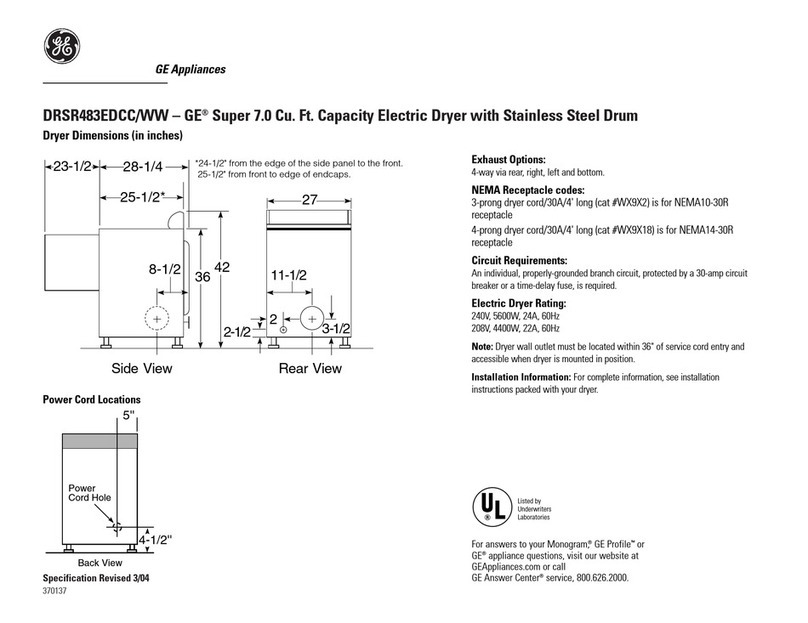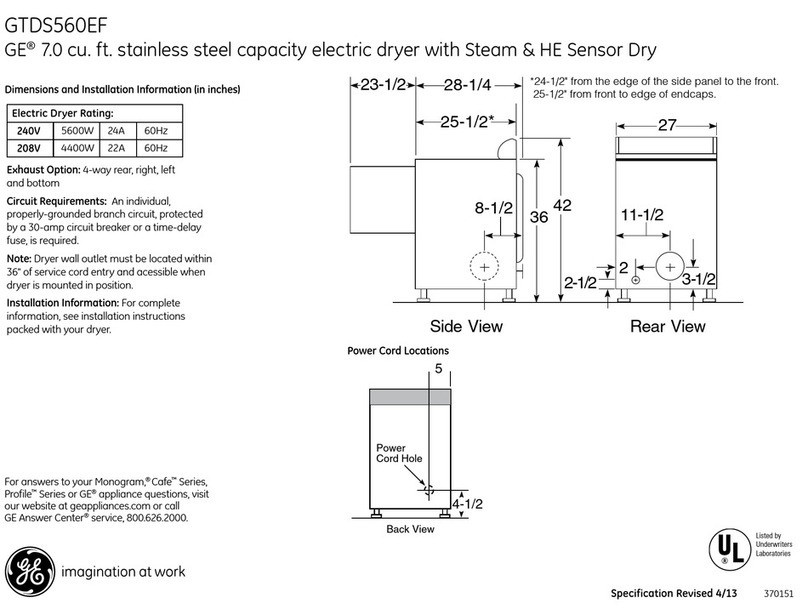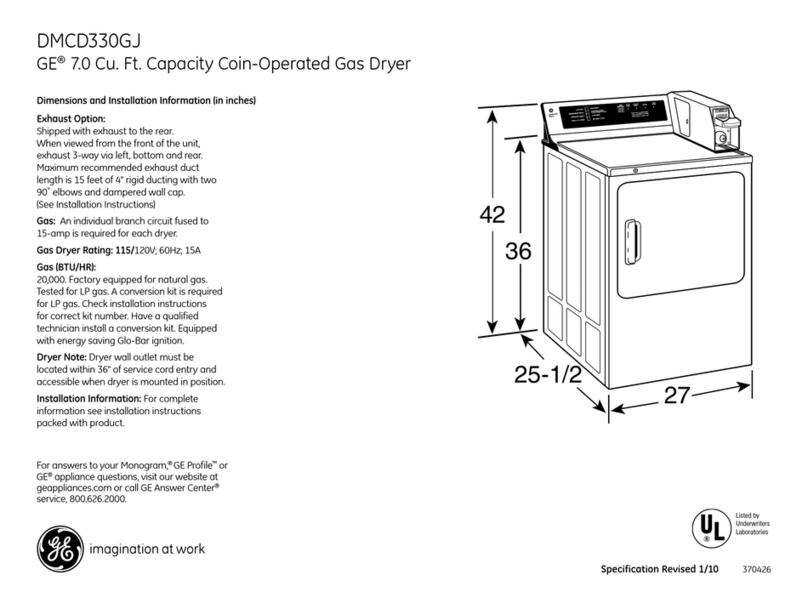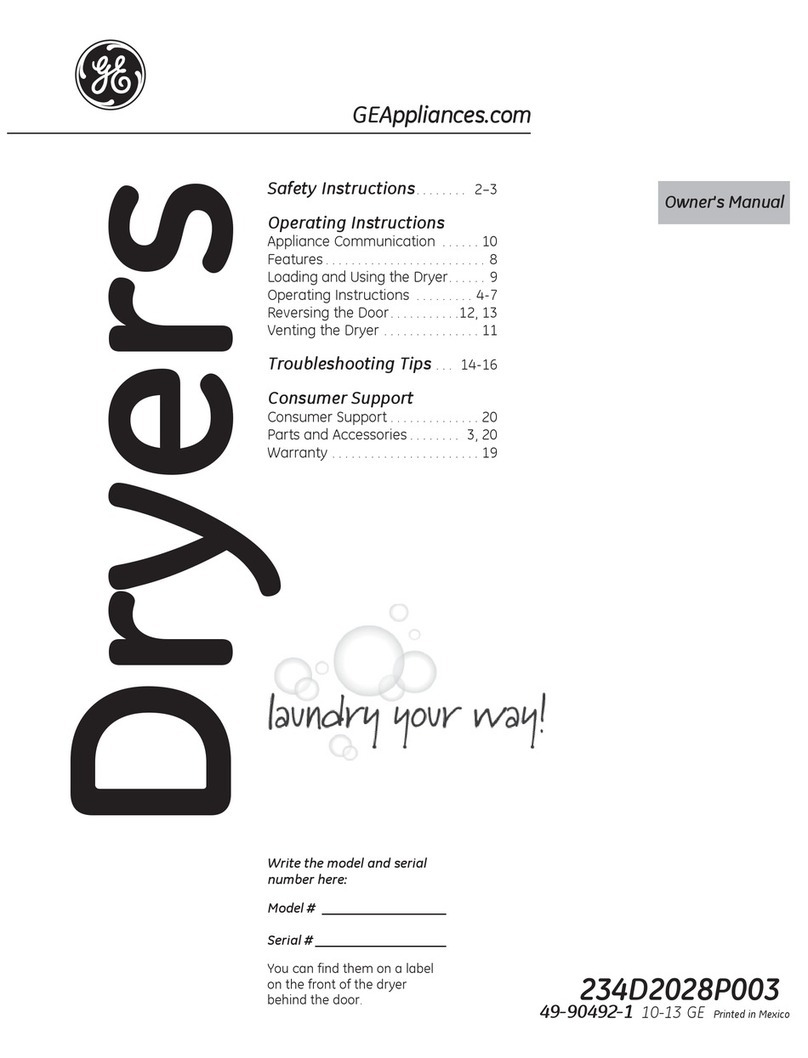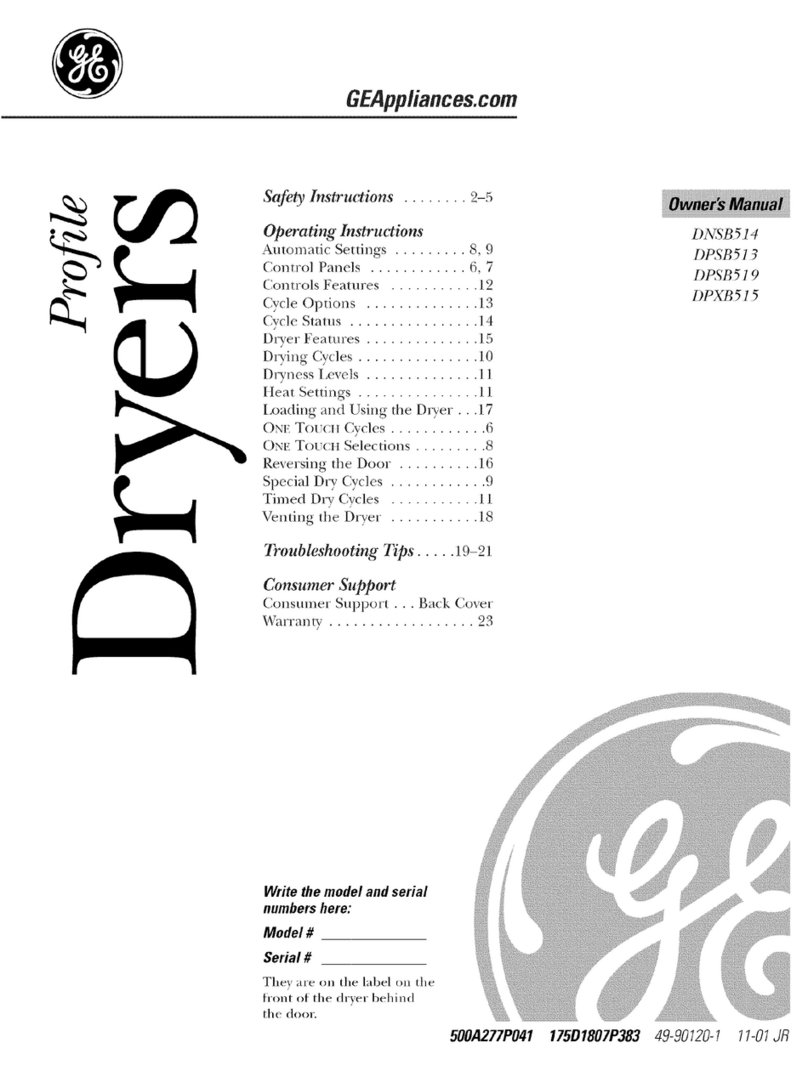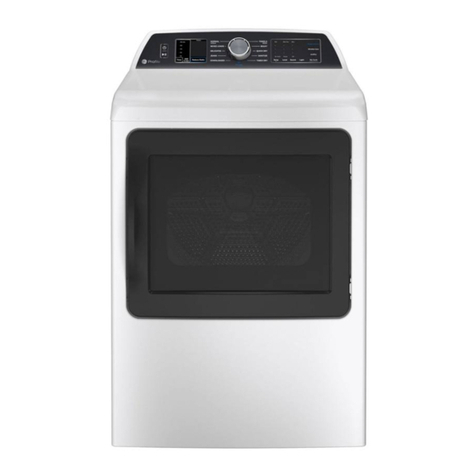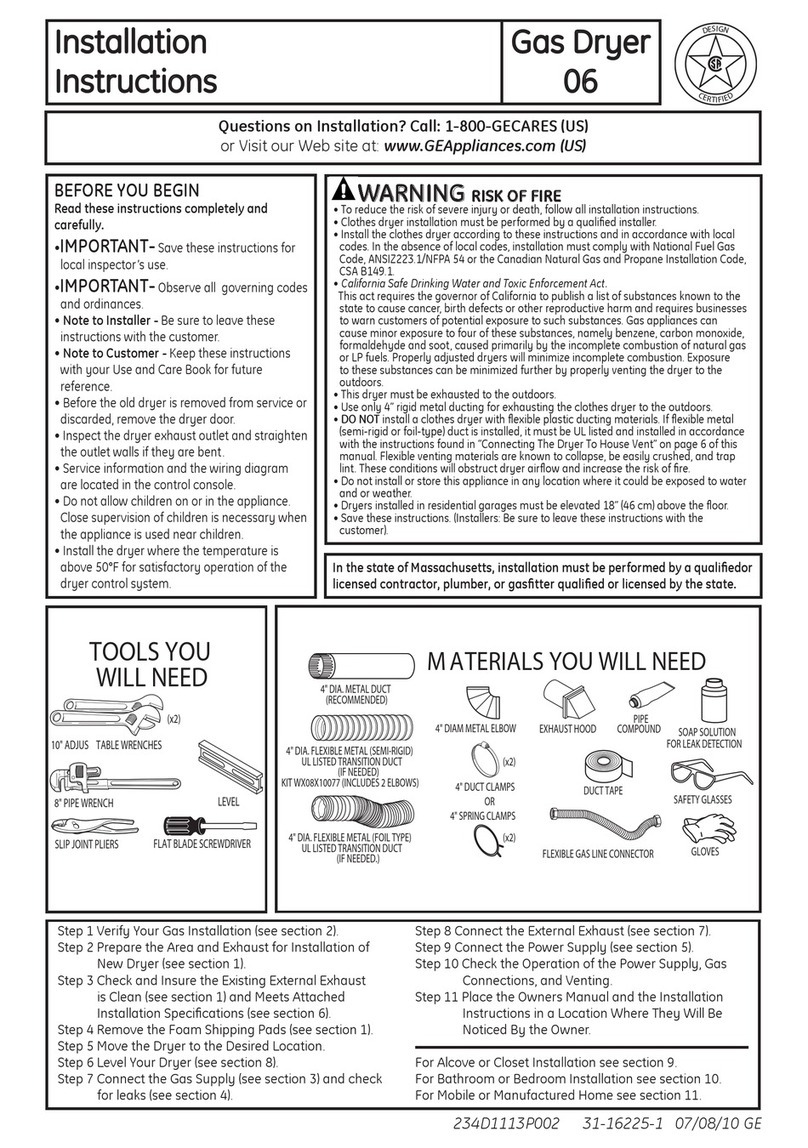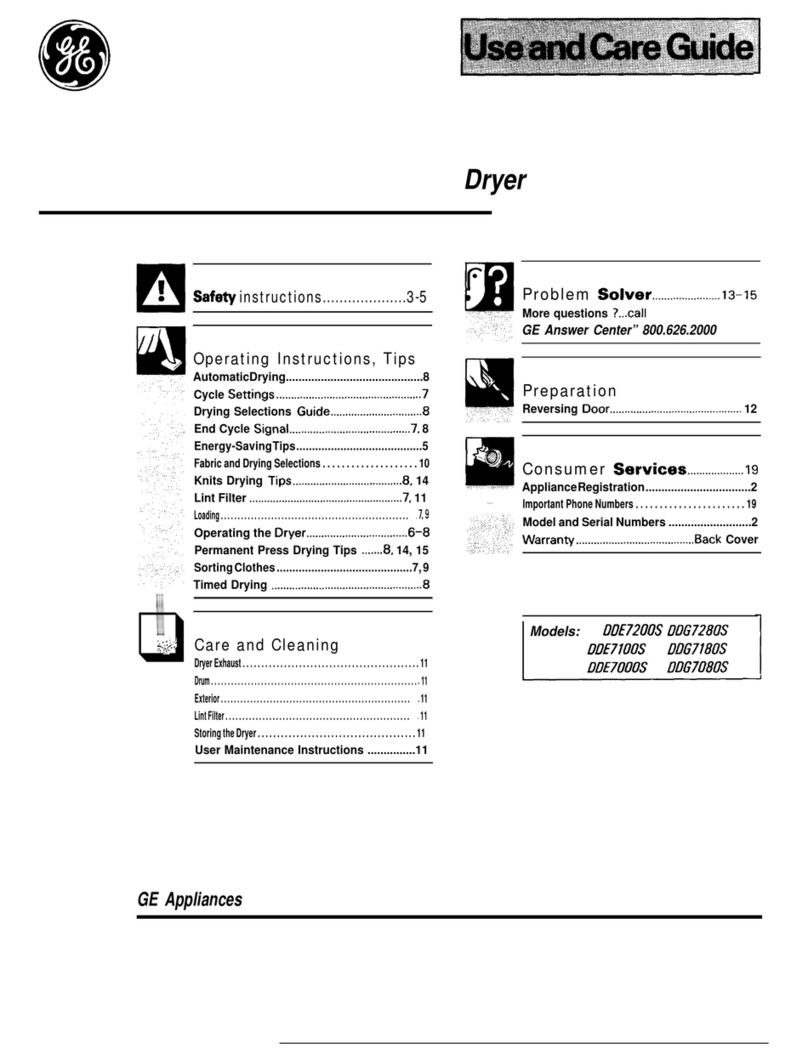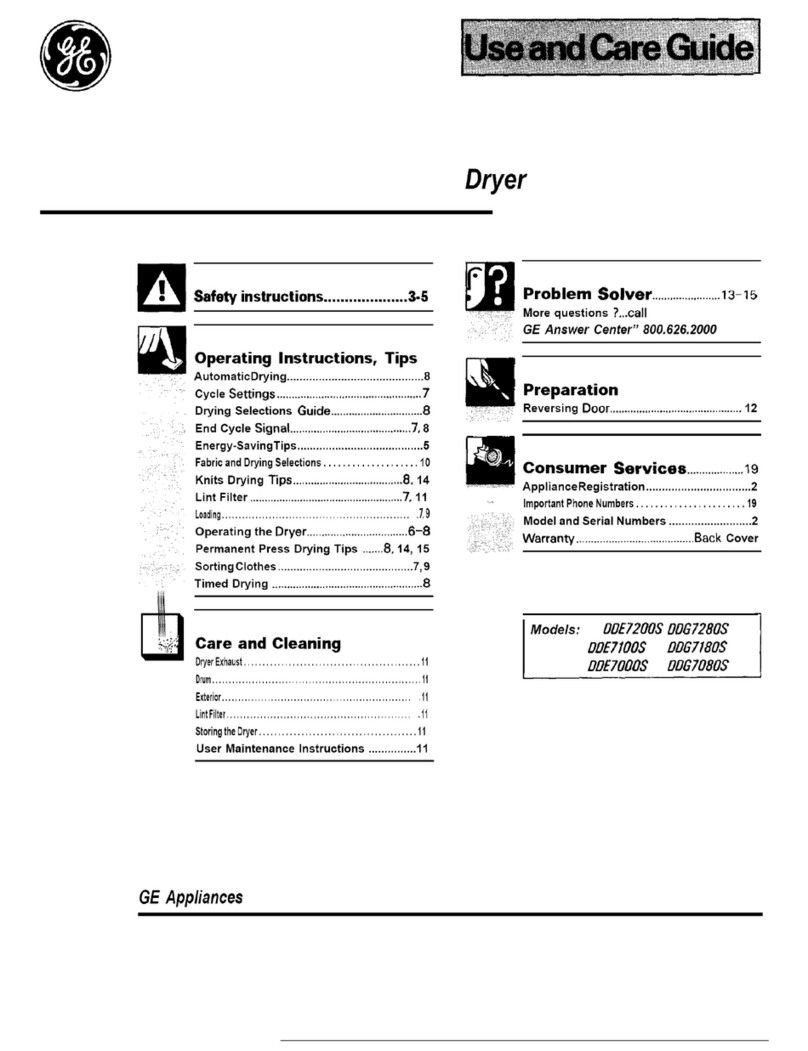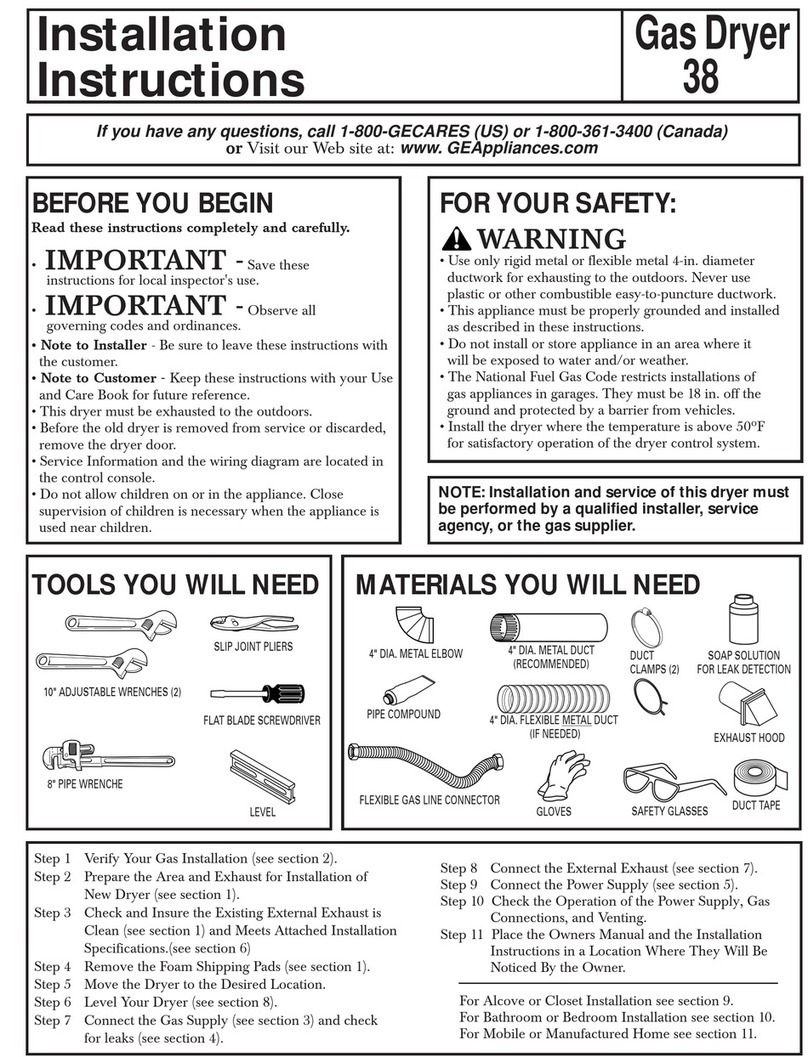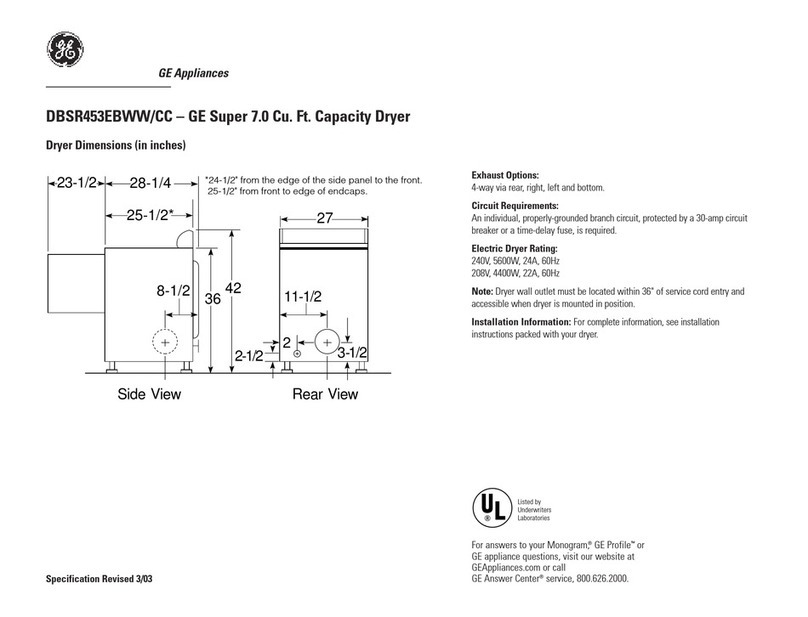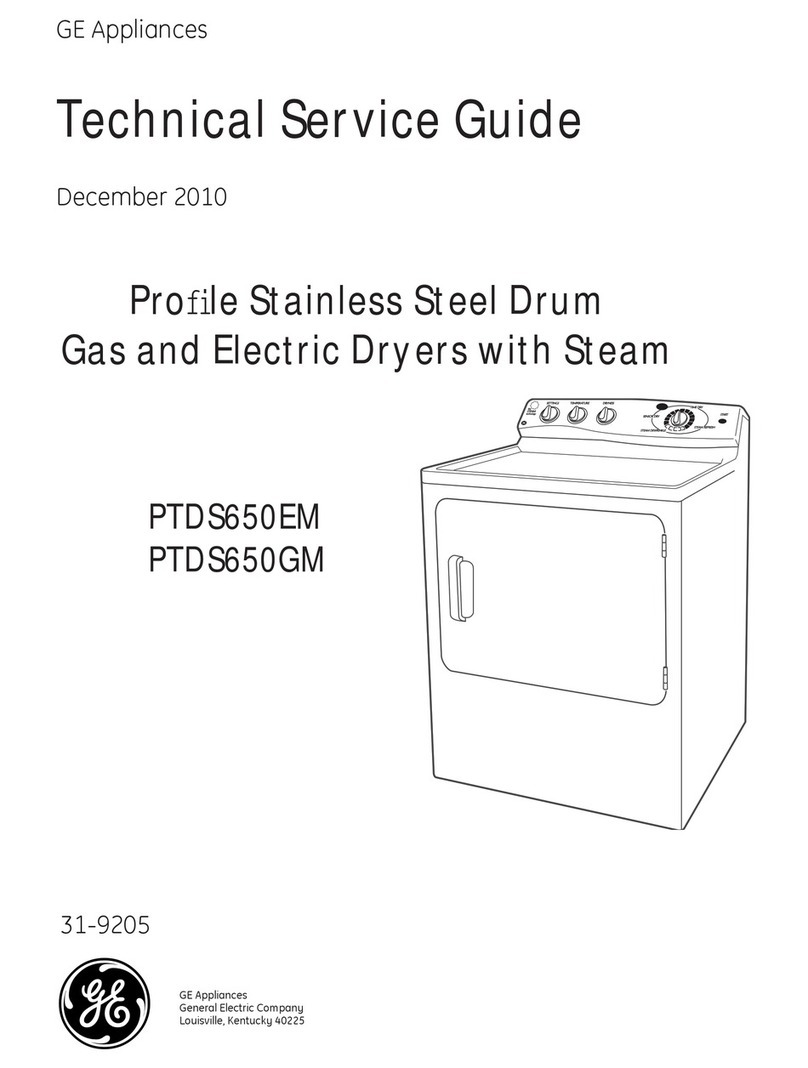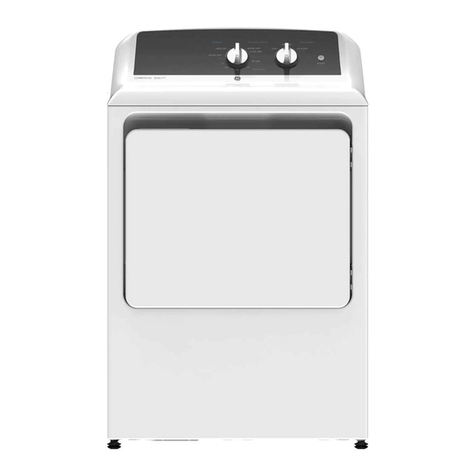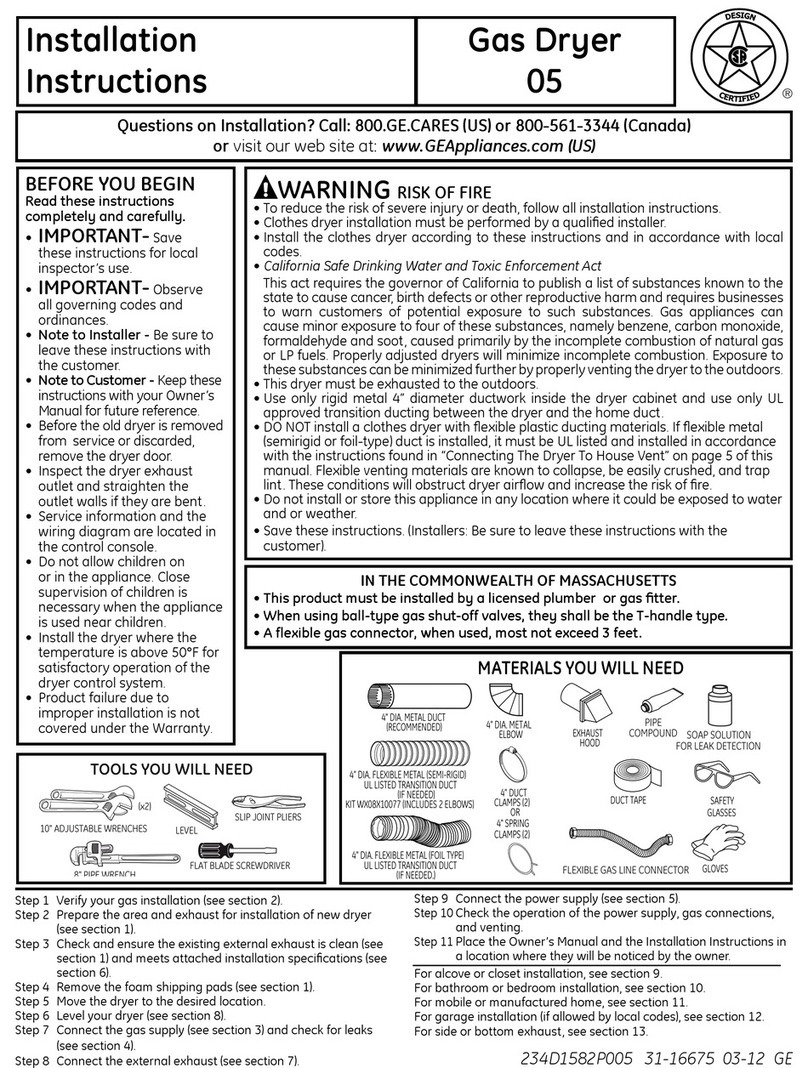Read all
safep
information
before
using
.
●
Clean the lint filter before
each load to prevent lint
accumulation inside the
dryer or in the room. DO
NOT
OPEWTE
THE
DR~R
WTHOUT
THE
HNT
FILTER
IN
PMCE.
.
Keep
the
area around and
underneath your appliances
free from the accumulation
of combustible materials,
such
as
lint, paper, rags,
chemicals, etc.
●
The interior of the machine
and the exhaust duct
connection inside the dryer
should be cleaned periodically
by a qualified individual.
●
Never reach into the dryer
while the drum is moving.
&fore
loading, unloading or
adding clothes, wait until the
drum has completely stopped.
●
Do not dry fiberglass articles
in your
d~er.
Skin irritation
could result from the remaining
glass particles that may be picked
up by clothing during subs~
quent dryer uses.
. The
laundV
process
Cm
reduce the flame
remdancy
of
fdbrics.
To avoid such a
result, the garment manufacturer’s
cme instructions should be
followed
ve~
carefully.
●
Close supervision is necessa~
if this appliance is used by or
near children. Do not allow
children to play inside, on,
or with this appliance or any
discarded appliance. Dispose
of discarded appliances and
shipping or packing materials
properly.
&fore
discarding a
dryer, or removing from service,
remove the door of the dryer
compar~ent.
●
Keep all laundry aids (such
as detergents, bleaches, fabric
softeners, etc.) out of the reach
of children, preferably in a
locked cabinet. Obseme all
warnings on container labels
to avoid personal injury.
. Keep the floor
arc]und
your
appliances clean and dry
to
reduce the possibility of slipping.
.
To
minimize the possibility
of electric shock, unplug this
appliance from the power supply
or disconnect the dryer at the
household distribution panel by
removing the fuse or switching
off the circuit breaker before
attempting any maintenance or
cleaning (except the
remowdl
and
cleaning of the lint filter).
●
N-:
Turning the Cycle
Selector knob to an OFF
position does NOT
disconnect the appliance
from
tie
power supply.
6






